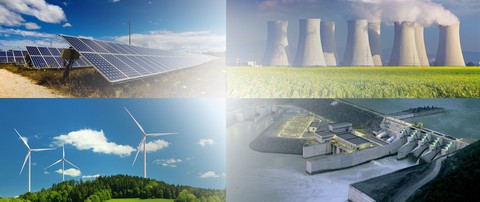The state program "Energy Saving, Energy efficiency improvement and low-carbon development", which is being developed by the Ministry of Economic Development, will include seven federal projects. This was announced by First Deputy Minister of Economic Development Maxim Kolesnikov at a meeting of the State Council Commission on Energy.
The need to develop a state program is due to the high level of energy intensity of GDP, in addition, non-energy needs account for a significant share of energy consumption in Russia, when fuel is used as raw materials for oil and gas chemistry and in other areas.
The most energy-intensive sectors remain electricity and heat, manufacturing and extractive industries, housing and communal services.
The energy intensity of GDP in 2023 amounted to 9.28 tons of conventional fuel (t.u.t.)/million rubles in 2016 prices, which is 3.9% lower than in 2022. Consumption of fuel and energy resources in Russia is growing and in 2023 reached 1,045 million tons of conventional fuel (t. u.t.) (by 2%, or 17 million tons of oil equivalent more than in 2022).
"We are now finalizing a list of measures that need to be integrated into the draft passport of the state program. We propose to include economic targets in it, and to reflect industry-specific measures in the passports of federal projects. As key indicators of the state program, we will take into account both the energy intensity of GDP and indicators that indicate low-carbon development. The first block of the created state program is a set of process measures. This includes updating existing legislation and certain sectoral federal projects: improving energy efficiency and low—carbon development of buildings, buildings and structures in the housing and communal services, energy, industry, transport, agriculture, sustainable land use and forestry," explained Maxim Kolesnikov, First Deputy Minister of Economic Development.
On behalf of Prime Minister Mikhail Mishustin, the target indicator of the comprehensive state program for reducing the energy intensity of GDP (by 35% compared to 2019) is being updated at the current stage, the base year is being clarified, as well as industry indicators for energy efficiency and energy conservation. When calculating targets, measures that are already being implemented in economic sectors are taken into account.
"When developing the draft passport of the state program, the measures of the operational plan for the implementation of the Strategy of Socio-economic Development of the Russian Federation with low greenhouse gas emissions until 2050 will be taken into account. We plan to send the draft state program to interested departments and experts for approval in mid—May in order to submit the state program to the Government in June," Kolesnikov added.
The developers also take into account in the new state program the results of the first stage of the creation of the Russian climate monitoring system, including the scenario characteristics of climate change in 1850-2100, the values of greenhouse gas emissions and uptake in the Inventory of Anthropogenic Emissions. The two-fold increase in the absorption rate compared to previous estimates is scientifically justified. A system for forecasting greenhouse gas emissions, methods for developing scenarios and models for assessing the socio-economic effects of climate policy implementation has also been created.

